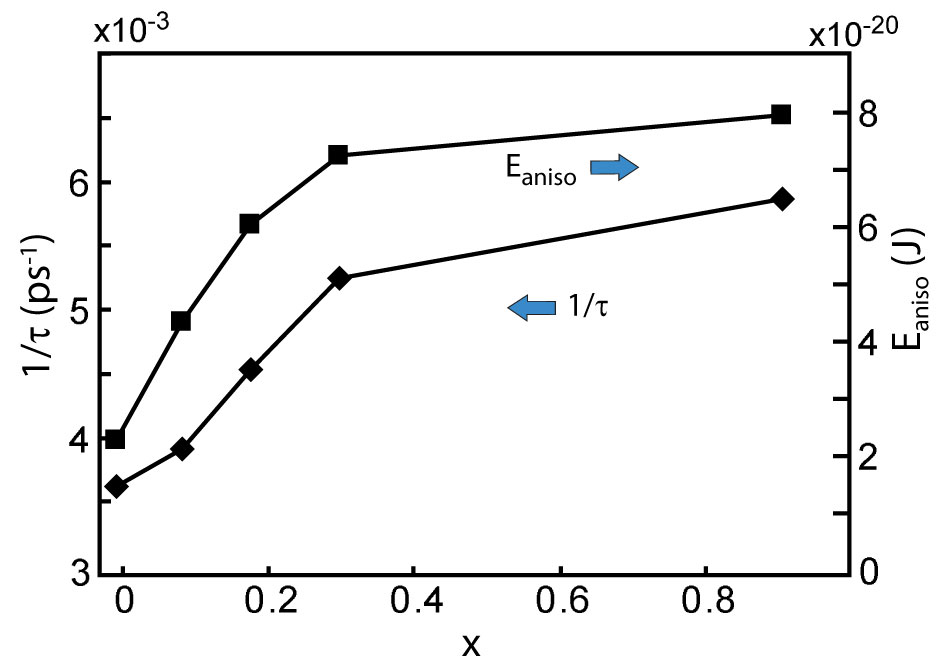Reports: G6
45995-G6 Real-time investigation of the dynamic structural changes of metal oxide nanocrystals using time-resolved x-ray spectroscopy
In previous year's report, we described the investigation on the size effects on the dynamics of magnetization in the optically excited colloidal Fe3O4 nanocrystals. In this earlier work, the recovery of magnetization following the optically induced demagnetization was observed to occur faster and with larger amplitude in smaller nanocrystals. This was ascribed to the larger proportion of surface region in smaller nanocrystals which is more efficient for spin-lattice relaxation than the interior region of the nanocrystal due to stronger effective spin-orbit coupling on the surface. In this year's report, we will describe the investigation of the correlation between the spin-lattice relaxation rate and chemical tuning of the average spin-orbit coupling employing CoxFe3-xO4 nanocrystals, where variation of Co content changes the average spin-orbit coupling strength. Since spin-orbit coupling is a major factor determining spin-lattice relaxation, we wanted to investigate systematically how the variation of spin-orbit coupling affects the dynamics of spin-lattice relation via direct time-resolved measurement of time-dependent magnetization employing pump-probe Faraday rotation technique.
In CoxFe3-xO4 nanocrystals, the average spin-orbit coupling in the nanocrystals increases with the increase of Co content. Experimentally, it is manifested as the increase of magnetic anisotropy energy. In superparamagnetic CoxFe3-xO4 nanocrystals, the magnetic anisotropy energy was obtained from the measurement of blocking temperature. We correlated the magnetic anisotropy energy and the rate of the spin-lattice relaxation in CoxFe3-xO4 nanocrystals. Figure 1 shows the comparison of the Co content-dependent magnetic anisotropy energy and spin-lattice relaxation rate of CoxFe3-xO4 nanocrystals within the range of 0<x<0.9. Both quantities increase as the Co content increases and becomes saturated at x>0.3, clearly showing the correlation between the two quantities. Compared to the bulk phase, the difference between the anisotropy energies of Fe3O4 and CoFe2O4 are significantly smaller probably due to the larger contribution of surface anisotropy in nanocrystals that is less sensitive to the chemical identity of the magnetic ions. In earlier studies in bulk metallic ferromagnets, spin-lattice relaxation rate was predicted to be proportional to the square of the anisotropy energy. In our study of CoxFe3-xO4 nanocrystals, on the other hand, the correlation between the spin-lattice relaxation rate and anisotropy energy is less steep compared to the bulk phase.
Figure 1. Cobalt content (x) dependent spin-lattice relaxation rate (1/t) and magnetic anisotropy energy (Eaniso) in CoxFe3-xO4 nanocrystals.





